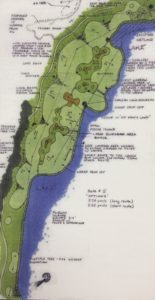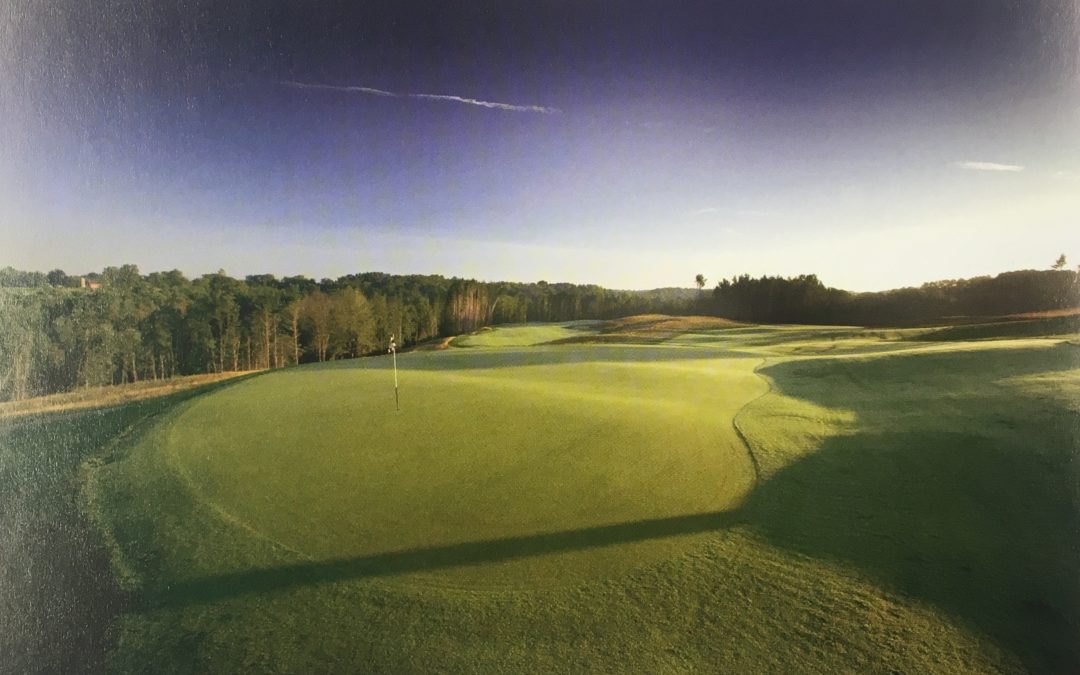Ray Hearn was an Evans Scholar at Michigan State University, where he earned dual degrees in landscape architecture and turfgrass science. His Holland, Michigan-based Raymond Hearn Golf Course Designs is working on Domaine de Lavagnac, in Southern France, a development in Moscow, and Porto Marina, near El Alameen, Egypt. His other creations include home state courses Island Hills Golf Club in Centreville, Quail Ridge Golf Club in Ada, Moose Ridge Golf Club in Oakland County, The Grande Golf Club in Jackson, Royal Scot Golf Course, in Lansing, Strategic Fox and Fox Hills in Plymouth, Ballantrae Country Club in Zeeland, Hemlock Golf Club in Ludington, The Golf Club at Yarrow in Augusta and Macatawa Legends Golf and Country Club. Hearn also designed Sea Oaks Country Club in Little Egg Harbor Township, New Jersey; the Mistwood Golf Club in Chicago, Illinois; and the Traditions Golf Club in Edmond, Oklahoma
turfgrass science. His Holland, Michigan-based Raymond Hearn Golf Course Designs is working on Domaine de Lavagnac, in Southern France, a development in Moscow, and Porto Marina, near El Alameen, Egypt. His other creations include home state courses Island Hills Golf Club in Centreville, Quail Ridge Golf Club in Ada, Moose Ridge Golf Club in Oakland County, The Grande Golf Club in Jackson, Royal Scot Golf Course, in Lansing, Strategic Fox and Fox Hills in Plymouth, Ballantrae Country Club in Zeeland, Hemlock Golf Club in Ludington, The Golf Club at Yarrow in Augusta and Macatawa Legends Golf and Country Club. Hearn also designed Sea Oaks Country Club in Little Egg Harbor Township, New Jersey; the Mistwood Golf Club in Chicago, Illinois; and the Traditions Golf Club in Edmond, Oklahoma
My company has been fortunate to receive some great golf course architectural contracts around the world on some very special sites. Close personal friends have often lightheartedly commented that golf course design is easy, since most golf course sites are similiar.
I tell them this couldn’t be further from the truth.
Domaine de Lavagnac Golf Resort, in Languedoc, France, will use a historic, 1400 AD château as the resort’s hotel and spa. The location has to be worked into the master land use plan. We have to avoid, but highlight, the Ancient Roman roads, which date back to 5 BC, that wind through the site. Maintaining and minimizing the impact to an active wine vineyard throughout the site, without compromising the golf layout, is another of our challenges at this site. All while we’re expected to take advantage of views that extend thirty miles off the site in all directions.
The location has to be worked into the master land use plan. We have to avoid, but highlight, the Ancient Roman roads, which date back to 5 BC, that wind through the site. Maintaining and minimizing the impact to an active wine vineyard throughout the site, without compromising the golf layout, is another of our challenges at this site. All while we’re expected to take advantage of views that extend thirty miles off the site in all directions.
At Hemlock Golf Club in Ludington, Michigan, we incorporated windswept, inland Lake Michigan dunes into the design and kept the amount of earth moved under 50,000 cubic yards by utilizing a “lay of the land” approach, while grassing the majority of the course into a pure sand subsoil. The client desired an award-winning golf course for a cost under $2-million. In doing this, we had to avoid oak, maple, and hemlock trees over a hundred years old. We are proud to  report that the completed project won Best New Opening from Golf Digest.
report that the completed project won Best New Opening from Golf Digest.
In an ongoing redesign at Flossmoor Country Club in Chicago, I must be careful to respect the history and tradition of a classic, pre-1,900 design with a star-studded past including a PGA Championship, U.S. Amateur Championship, and a Western Open. My challenge is to recapture lost shot-value and play angles by selective tree removal, fairway expansions, and hazard placement, which will recapture the lost, classical playability and appearance of features from the early 1900s. Basically, we are remodeling, renovating and restoring areas of the entire course.
Based on the above, I think we would all agree that a golf course architect’s canvas is anything but typical or predictable, but most of us would also agree that we all love these challenges and enjoy what we do.

